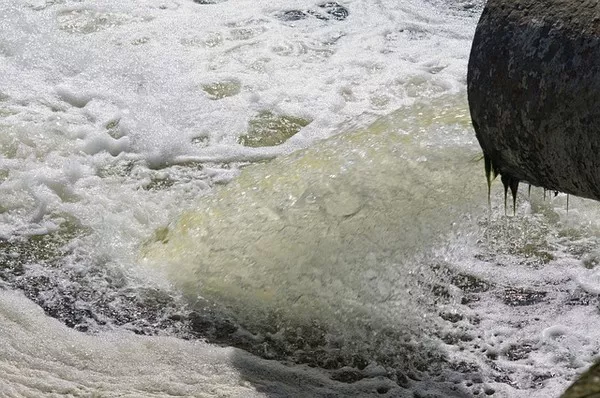Wastewater treatment is a critical process that ensures the safe and responsible disposal or reuse of water contaminated with various pollutants. It plays a vital role in protecting the environment, public health, and supporting sustainable water management practices. The wastewater treatment process involves a series of steps designed to remove contaminants and pathogens from sewage or industrial effluents. In this article, we will delve into the essential steps in wastewater treatment, highlighting their significance in safeguarding our water resources and the environment.
Preliminary Treatment
The journey of wastewater treatment begins with the preliminary treatment stage. During this phase, large solid debris such as sticks, leaves, plastic, and other non-biodegradable materials are removed. This process typically takes place in screens and grit chambers, where the flow is regulated, and larger particles are separated. By eliminating these objects early on, it prevents damage to downstream equipment and ensures smoother processing.
Primary Treatment
Following preliminary treatment, the wastewater enters the primary treatment stage. Here, the water is allowed to settle in large tanks, known as primary clarifiers, for a specified period. During this time, the heavier solid particles, called sludge, settle at the bottom of the tanks, while the lighter materials float to the top. The clarified water is then collected from the middle portion, also known as the supernatant. Primary treatment mainly focuses on the removal of suspended solids and some organic matter, reducing the overall pollutant load.
Secondary Treatment
Secondary treatment is the heart of wastewater purification and focuses on the biological degradation of organic matter. This step harnesses the power of microorganisms, such as bacteria and protozoa, to break down the remaining organic pollutants. There are two common methods for secondary treatment:
a. Activated Sludge Process: In this method, wastewater is mixed with a culture of microorganisms in aeration tanks. The microorganisms feed on the organic matter, converting it into simpler, less harmful substances. This process is highly effective in reducing the biological oxygen demand (BOD) of the water.
b. Trickling Filters: Trickling filters employ a bed of rocks or synthetic media where wastewater is trickled over. Microorganisms grow on the media’s surface and consume organic matter. This method is particularly suitable for smaller treatment plants.
Tertiary Treatment
Tertiary treatment is an advanced step aimed at further purifying the water by removing any remaining impurities. It is not always part of every wastewater treatment plant but is crucial when treated water is intended for discharge into sensitive environments or for potable reuse. Several methods can be used for tertiary treatment:
a. Filtration: Filtration processes like sand filtration or membrane filtration help remove fine particles and remaining microorganisms.
b. Chemical Treatment: Coagulation, flocculation, and disinfection with chemicals like chlorine or ozone are used to remove specific contaminants and pathogens.
c. Nutrient Removal: In some cases, excess nutrients like nitrogen and phosphorus are removed to prevent eutrophication in receiving waters.
d. Advanced Oxidation: Advanced oxidation processes (AOPs) involve the use of powerful oxidants like hydrogen peroxide and ultraviolet (UV) light to break down persistent organic pollutants.
Disinfection
Disinfection is a crucial step to ensure that the treated wastewater is safe for discharge or reuse. The goal is to kill or inactivate any remaining pathogens, such as bacteria, viruses, and parasites. Common disinfection methods include:
a. Chlorination: Chlorine gas or hypochlorite solutions are added to the water to kill microorganisms. However, the use of chlorine must be carefully managed to prevent the formation of harmful disinfection byproducts (DBPs).
b. Ultraviolet (UV) Disinfection: UV light is used to disrupt the DNA of microorganisms, rendering them unable to reproduce or cause disease. UV disinfection is effective and does not introduce chemical byproducts.
c. Ozonation: Ozone gas is a powerful disinfectant and oxidant. It is effective in killing microorganisms and breaking down organic contaminants. Ozone treatment is often used in conjunction with other disinfection methods for added effectiveness.
Sludge Handling and Disposal
Throughout the wastewater treatment process, solid waste accumulates as sludge. This sludge contains concentrated pollutants and microorganisms from the treatment steps. Proper handling and disposal of sludge are crucial to prevent environmental contamination. Common methods for managing sludge include:
a. Thickening: Sludge is thickened to reduce its volume, making it easier to handle and transport.
b. Dewatering: Dewatering processes remove excess water from sludge, further reducing its volume.
c. Digestion: Sludge can undergo anaerobic digestion to break down organic matter, producing biogas as a byproduct.
d. Disposal or Beneficial Reuse: Sludge can be disposed of in landfills, incinerated, or beneficially reused as a soil conditioner or fertilizer.
Conclusion
Wastewater treatment is a complex and multi-stage process that is vital for protecting our environment and public health. By effectively removing contaminants, organic matter, and pathogens from sewage and industrial effluents, wastewater treatment plants contribute to the responsible management of water resources. Each step in the treatment process plays a unique role in ensuring that the treated water meets regulatory standards and can be safely discharged into the environment or reused for various purposes. As populations grow and environmental concerns increase, continued advancements in wastewater treatment technology and practices will be essential to meet the challenges of the future.

